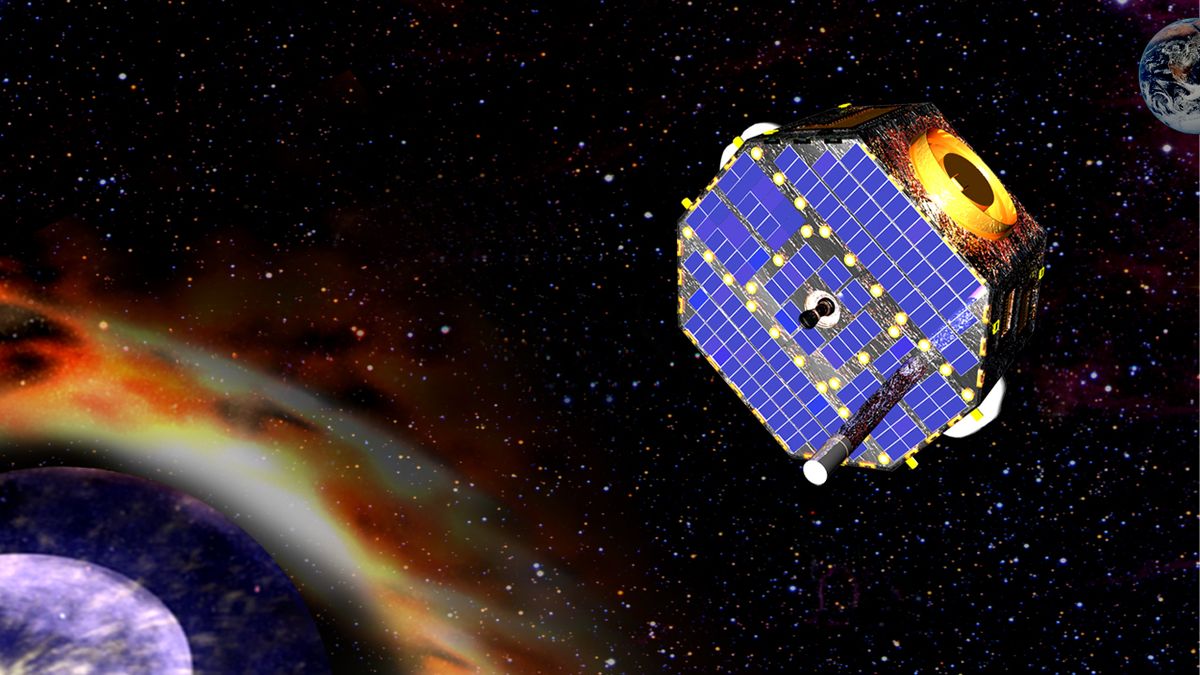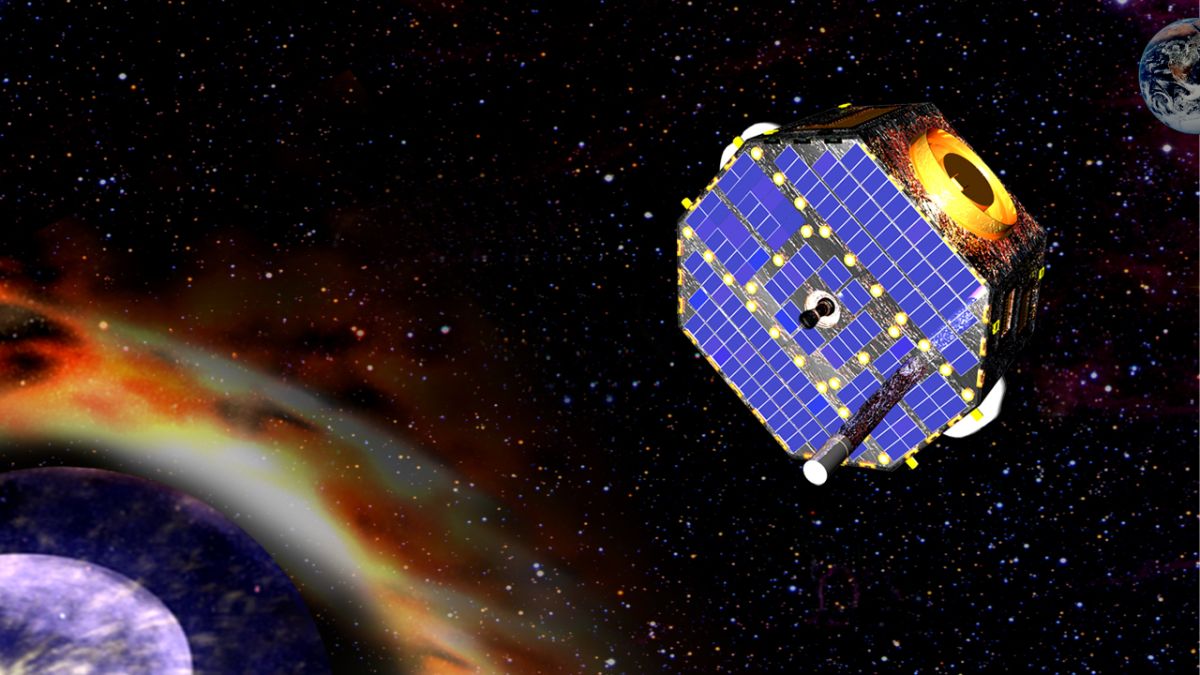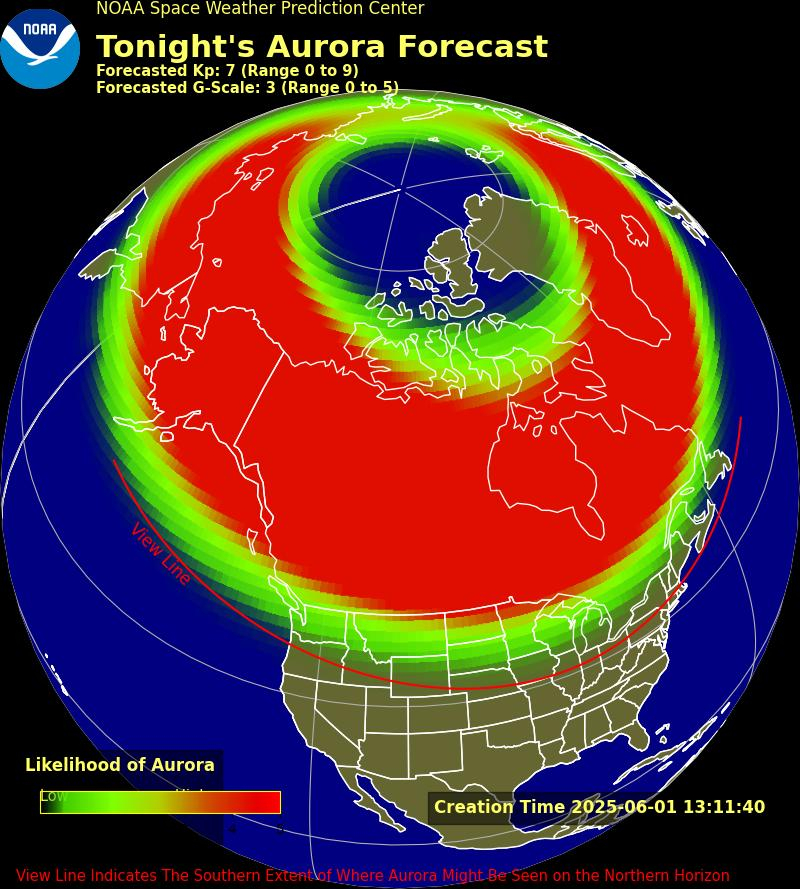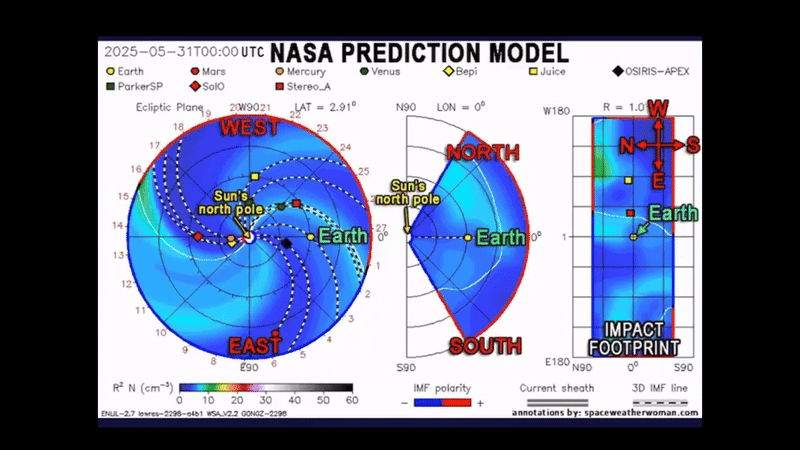
A NASA spacecraft exploring a key deep-space zone is in contingency.
NASA’s Interstellar Boundary Explorer (IBEX) experienced a flight computer reset Feb. 18, agency officials said in an update Friday (Feb. 24). The spacecraft launched in October 2008 to examine the outer edge of the heliosphere, or the “bubble” that represents the boundary between the sun‘s environment and interstellar space.
Flight controllers have been unsuccessful in “regaining command capability” despite resetting hardware and software on the ground, the agency said in the statement (opens in new tab). “Flight software still is running, and the spacecraft systems appear to be functional,” the statement added, but noted commands are not processing aboard IBEX.
Related: Mysterious energy ribbon at solar system’s edge a ‘cosmic roadmap’
IBEX is already programmed to reset itself and restart its power on March 4, NASA officials noted, which will provide a backup if the mission team is unable to solve the problem. “NASA will provide additional information on IBEX following the reset unless the agency is able to find a solution before,” agency officials said.
IBEX was launched nearly 15 years ago to “discover the global interaction between plasma from the solar wind and the interstellar medium at the boundary region of the solar system,” according to (opens in new tab) the Southwest Research Institute (SwRI) in San Antonio, which leads the mission.
The spacecraft made its first map of the heliosphere in the first year after its launch, in 2009, and continues to map the entire sky every six months. It is most famous for discovering a dense region of particles, nicknamed the “IBEX ribbon.”
The ribbon occurs as neutral hydrogen atoms carried in the solar wind (or constant stream of particles from our sun) interact with the magnetic field of the Milky Way. The ions’ interactions with the magnetic field creates vibrations or waves in the field and the ions are constrained in ribbon-like shapes. Scientists are studying this phenomenon to learn more about the heliosphere.
Elizabeth Howell is the co-author of “Why Am I Taller (opens in new tab)?” (ECW Press, 2022; with Canadian astronaut Dave Williams), a book about space medicine. Follow her on Twitter @howellspace (opens in new tab). Follow us on Twitter @Spacedotcom (opens in new tab) or Facebook (opens in new tab).



